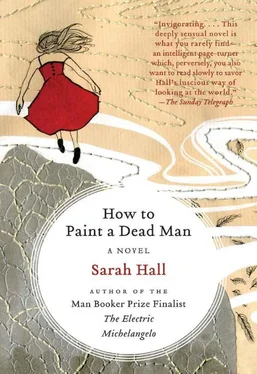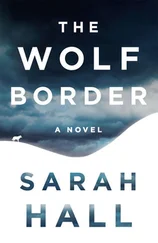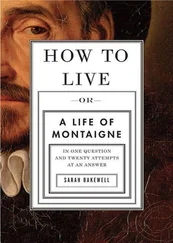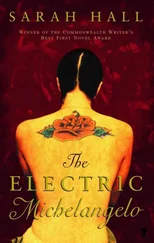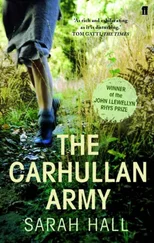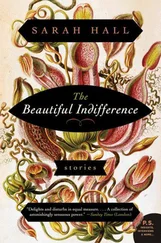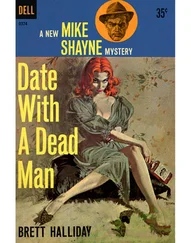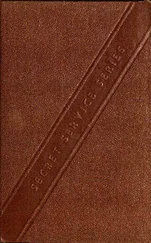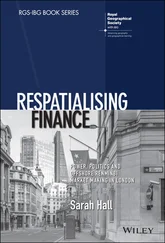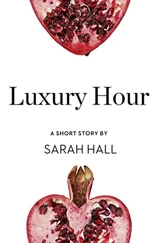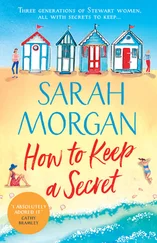Sarah Hall - How to Paint a Dead Man
Здесь есть возможность читать онлайн «Sarah Hall - How to Paint a Dead Man» весь текст электронной книги совершенно бесплатно (целиком полную версию без сокращений). В некоторых случаях можно слушать аудио, скачать через торрент в формате fb2 и присутствует краткое содержание. Год выпуска: 2009, Издательство: Harper Perennial, Жанр: Современная проза, на английском языке. Описание произведения, (предисловие) а так же отзывы посетителей доступны на портале библиотеки ЛибКат.
- Название:How to Paint a Dead Man
- Автор:
- Издательство:Harper Perennial
- Жанр:
- Год:2009
- ISBN:нет данных
- Рейтинг книги:4 / 5. Голосов: 1
-
Избранное:Добавить в избранное
- Отзывы:
-
Ваша оценка:
- 80
- 1
- 2
- 3
- 4
- 5
How to Paint a Dead Man: краткое содержание, описание и аннотация
Предлагаем к чтению аннотацию, описание, краткое содержание или предисловие (зависит от того, что написал сам автор книги «How to Paint a Dead Man»). Если вы не нашли необходимую информацию о книге — напишите в комментариях, мы постараемся отыскать её.
, Sarah Hall, "one of the most significant and exciting of Britain's young novelists" (
), delivers "a maddeningly enticing read... an amazing feat of literary engineering" (
).
How to Paint a Dead Man — читать онлайн бесплатно полную книгу (весь текст) целиком
Ниже представлен текст книги, разбитый по страницам. Система сохранения места последней прочитанной страницы, позволяет с удобством читать онлайн бесплатно книгу «How to Paint a Dead Man», без необходимости каждый раз заново искать на чём Вы остановились. Поставьте закладку, и сможете в любой момент перейти на страницу, на которой закончили чтение.
Интервал:
Закладка:
Oh come on. Here he is, wedged under a lump of fell, and he’s being competitive with his peers. Don’t be so ridiculous, Peter, don’t be a clod. He’s got to put the testosterone to better use. He’s got to concentrate on getting free. ‘Bastard! Bastaaaards!’ Yes, that’s more like it. Diabolical, unhinged ranting. Very helpful, very gainful. Numpty. Dimwit. Bozo.
Right. No. He’s got to think positive. Got to gather himself. These stones are not his enemies. They are not vengeful organisms with creepy arctic blood and carnivorous appetites. They are his lifelong friends. He respects them. He must put the wounded, and frankly a little hysterical, side of his imagination away. This is not comeuppance. It is not self-prophesying fate. This place might presently be fucking him up quite savagely but he must remember he loves it. He has always loved it.
Beaches, mountains, rivers. These have all been his working provinces. Places where the weather intensifies. Places where the rock is clean — polished by water or rough air, with a texture older than dinosaur skeleton, so old it has moved beyond history. Corrie. Tarn. Glacier-run. Causeway. Craters. Ghylls. Sea runes. The Cumbrian hills. The coastlines. He has chosen places of rock over all else, rock in the majority-towering, teetering magma — or rock in paucity — sediments, submerged in sand and fluid. Stone is as honest as landscape gets. It is this that has governed his career, made him antiquated, then avant-garde, then antiquated again.
He still doesn’t know why, though he’s come up with plenty of interesting explanations over the years, some nonsensical, some verging on the supernatural. In his own head he has always struggled to define this obsession with substance, this sensibility. Ever since his father walked up the return, sooty-faced, with that marine fossil he had tapped out of the limestone above the coal seam, coming in and placing it on the table in front of his son, Peter has been held. The boyhood interest in cave art, hieroglyphics, the collecting of petrified roots and heathers, arrowheads, dobbies. The brickworks, the amphitheatres, the Greek marbles. Caspar David Friedrich, Brancusi. He can hear himself wittering on about muses, callings, proclivities; he can see himself drawing figure-eight infinities in the air with his smoking hand while the camera records him; and simultaneously that pedantic voice is saying, no, that’s not it, you’re talking rubbish. Never stopped him trying.
He is a bit dippy on the subject, admittedly. He is a bit evangelical, a bit happy-clappy. But there are the facts of the matter — the geomagnetics. Geiger readings tell strange stories in these parts of the British Isles; they are often high, very high. Their stoddering needles lend authenticity to theories of nuclear infection, blast-off sites or alien visitation, the hum of an energy not kinetic, not electric, not periodic either, but energy nevertheless, stoked into the earth’s layers. There is some undiscovered life-force, he is sure of it. Something living. Something assayable. The rocks really are alive.
He can’t tell people this of course, this nuttiness, this flapdoodle, science bastardised into conspiracy theory. Though he often does tell people, or tries to. Over the sticky bar in the Queen’s Head. Into the fuzzy microphone and the amused face of the journalist. It’s what he says and is known to say — eccentric, florid things. This is who he is — England’s traditional modern landscapist, full of brio and home-cooked whisky, working three thousand feet up and pretty close to the edge of entertaining psychosis.
Ivan Dyas understood it of course. Good old Ivan. A giant in his field and Peter’s only amenable tutor at the Liverpool art school. The prescient, sweaty man slapped him hard on the back when Peter revealed his peculiar fascination. ‘Excellent. Many would kill for such an infatuation, laddo. It’ll be this that does the business for you, if you let it.’ They were such good pals. All those trips to exhibitions. The hours spent in the pubs-The Throstle’s Nest, The Why Not, and Doctor Duncan’s. The debates and discussions, the drinking competitions, looking at the wannabes in Kavanagh’s. It all seems such a long time ago now. Ivan Dyas. ‘What a man. Council park sculptor, glassblower, bronze-scale northern Casanova. He remembers him manifesting in college one day like a lusty fawn god before the class, in a long leather coat and a porno moustache. Combining Mersey Beat style with tradesman’s knowledge. Espousing wisdoms on a come-and-see-me-after basis, theoretical and metric, practical and prophylactic.
Peter can still see him, sitting on the studio table, one knee flung wide, bollocks straining against the trouser plaid. He knew about rock all right-both kinds. ‘You can bang at flint and quartz all you want,’ he would say, ‘with your big wild swings. But it’ll never let you in. It’ll not undress for you. You’ll break a wrist first, and blunt your instruments, and the Chancellor’ll have a fit, but you’ll not make a single clean cut. Now. Watch this.’ And he would gently tap and pull the hammer and the chisel, as if he was stroking himself off. First Lesson: brute force is more likely to shatter a thumb than damage an igneous block. Not until they understood the grain, the compound, curve, and tensile strength, not until they understood the inherent direction of matter itself, would they progress any further in sculpture (and life, boys and girls, and life!). Sculpture was about respect and intuition, collaboration. Sculpture was seduction, like sex with a young lady (plenty of which was had by the man, much to his wife’s dismay).
Peter’s time there would have been a waste were it not for him. He’d arrived in Liverpool with scholarship grades and a second-hand donkey jacket, proud son of a miner. He was now, officially, an academic and a painter, two anomalies in the Caldicutt family and proof of the new social mobility. His was a conventional grammar education; he respected the canon and the system that had enabled him, and he would become something of a formalist behind the walls of the studio. But he felt guilty: guilty for his library card, guilty for wanting to read and for his admiration of classical things. He was fashionably working-class, fashionable according to those who weren’t. Another form of pity, his old man would have said, another way of telling you what you are, and aren’t.
People expected him to be radical, representative, a spokesperson. People ennobled his upbringing, thought his duty was anti-establishmentarianism-popular word back then: they all had to know how to spell it. Never mind his interests. Never mind his freedom. The tutors wanted him to paint in black. They wanted Lowry, they wanted grit. He was back to the mines, back to square one. All he wanted was to smell those heavy, stitched-leaf books and paint the sea. Some bloody revolutionary.
But Dyas was something of an atavist too, for all his current record collection, his praise of contraceptives and new European architecture. There was room for all creeds in his philosophy-Baroque to Bauhaus, Mondrian to Mitchell. Didn’t matter, so long as it had integrity, something poignant to say. He’d stride into class, dirty blond curls bouncing round his head, cunny-lip goatee suggesting nothing less than the female labia, and the lecture would begin. The kicking shut of the door- boom. A fist pounding the table- bang. His releasing of the projector roll- wham, chugger-chugger-chugger. ‘So. You think Picasso didn’t have a clue about proportion then? Right. Put that pencil between your lips, Yvonne,’ he’d yell to the black-lashed kitten on the back row. ‘Go on, love, and give us a nice pout if you like. There you go. Lovely. Now the rest of you, the measurement from spirit level to eye…’
Читать дальшеИнтервал:
Закладка:
Похожие книги на «How to Paint a Dead Man»
Представляем Вашему вниманию похожие книги на «How to Paint a Dead Man» списком для выбора. Мы отобрали схожую по названию и смыслу литературу в надежде предоставить читателям больше вариантов отыскать новые, интересные, ещё непрочитанные произведения.
Обсуждение, отзывы о книге «How to Paint a Dead Man» и просто собственные мнения читателей. Оставьте ваши комментарии, напишите, что Вы думаете о произведении, его смысле или главных героях. Укажите что конкретно понравилось, а что нет, и почему Вы так считаете.
